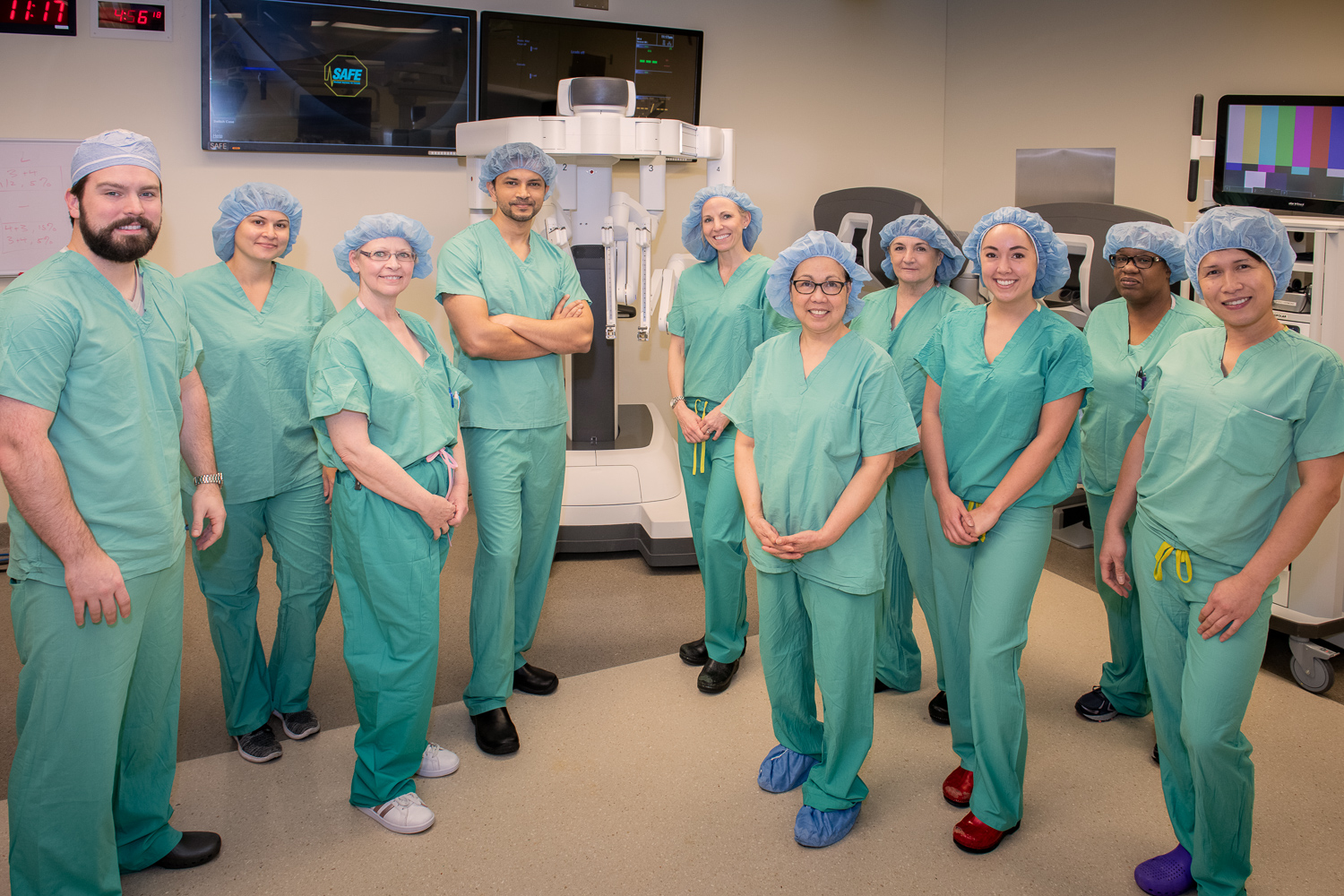20
January
2019
|
17:00 PM
America/Chicago
Northwestern Memorial Hospital First in the U.S. to Perform Robotic Lung Volume Reduction Surgery
Innovative therapy improves outcomes,
reduces recovery time for patients with severe emphysema

“Robotic-assisted technology is revolutionizing the way patients are treated for chronic lung diseases,” said Ankit Bharat, MD, surgical director of the Lung Transplant Program & ECMO at Northwestern Memorial. Dr. Bharat and a team of highly skilled clinicians performed the first procedure late last year. “By providing this innovative surgical option to our patients, we are changing the paradigm of emphysema management by expanding the possibilities to our patients who desperately need an option to improve breathing to enhance their quality of life and improve overall health.”
During the robotic LVRS, a surgeon with specialized training in robotic surgery sits at the computer console and looks through the stereoscopic, High Definition (HD) monitor to see inside the patient, giving the surgeon a better, more detailed 3D view of the operating area than the human eye can offer. The tower, which is positioned directly over the patient during surgery, contains the robot’s four arms—three that can hold a multitude of different surgical instruments, and a fourth that holds the system’s 3D cameras. These arms are controlled by a computer that exactly replicates the movements of the operating surgeon.
Using the master controls, the surgeon maneuvers the arms of the robotic device to make three small incisions on the right side of the chest accessing the lungs and removing the diseased cysts called blebs. This lets the remaining lung tissue function better for optimal breathing. By removing the non-function lung tissue, the diaphragm, chest wall, and rib cage are able to return to a more normal shape and work more efficiently.
Unlike the traditional surgical approach that uses a larger chest incision to access the lungs, the robotic LVRS only requires three 8-millimeter incisions. The smaller incisions reduce scarring and minimize the risk for infection, while also potentially reducing the length of stay in the hospital.
“We are excited to expand the therapeutic options we can now offer to a broader range of patients who need surgical intervention and are not responding to medications or pulmonary rehabilitation,” Ravi Kalhan, MD, pulmonologist and medical director of the LVRS program at Northwestern Memorial. “This new option demonstrates our team’s determination to deliver superior care and a level of expertise not found anywhere else in the country.”
Kalhan adds not every patient is a good candidate for robotic LVRS and must fit specific criteria in order to be considered for surgery. “Patients must be diagnosed with severe COPD with limited exercise capacity after completing pulmonary rehabilitation.”
Emphysema is classified as a form of COPD caused by damage to the alveoli, the tiny air sacs in the lung where the exchange of oxygen and carbon dioxide occurs. With emphysema, damage to the alveoli results in air becoming trapped, causing them to expand and rupture. As a result of the progressive damage to alveoli, people with emphysema experience a decreased level of oxygen in the blood combined with an increased level of carbon dioxide in the blood. Currently 16 million Americans are affected by COPD according to the U.S. Centers for Disease Control and Prevention.
Northwestern Medicine Division of Pulmonary and Critical Care Medicine comprises of board-certified thoracic surgeons and interventional pulmonologists including Drs. Bharat and Kalhan, Christine Argento, MD, G.R. Scott Budinger, MD, and Colin Gillespie, MD. The multidisciplinary team of physicians perform leading-edge procedures to treat patients with advanced stages of emphysema. Treatment options include LVRS, bullectomy (removing large areas of emphysema or bullae), lung transplantation, thoracotomy, video-assisted thoracic surgery and Zephyr Endobronchial Valve. The division also conducts translational and clinical research in areas such as pneumonia, airways disease, (COPD and asthma), adult cystic fibrosis, acute respiratory distress syndrome as well as research currently being conducted to help prevent COPD before it starts.
For more information about the various treatment options for COPD, including LVRS visit lung.nm.org or call 312-926-LUNG (5864) to make an appointment with a physician.
